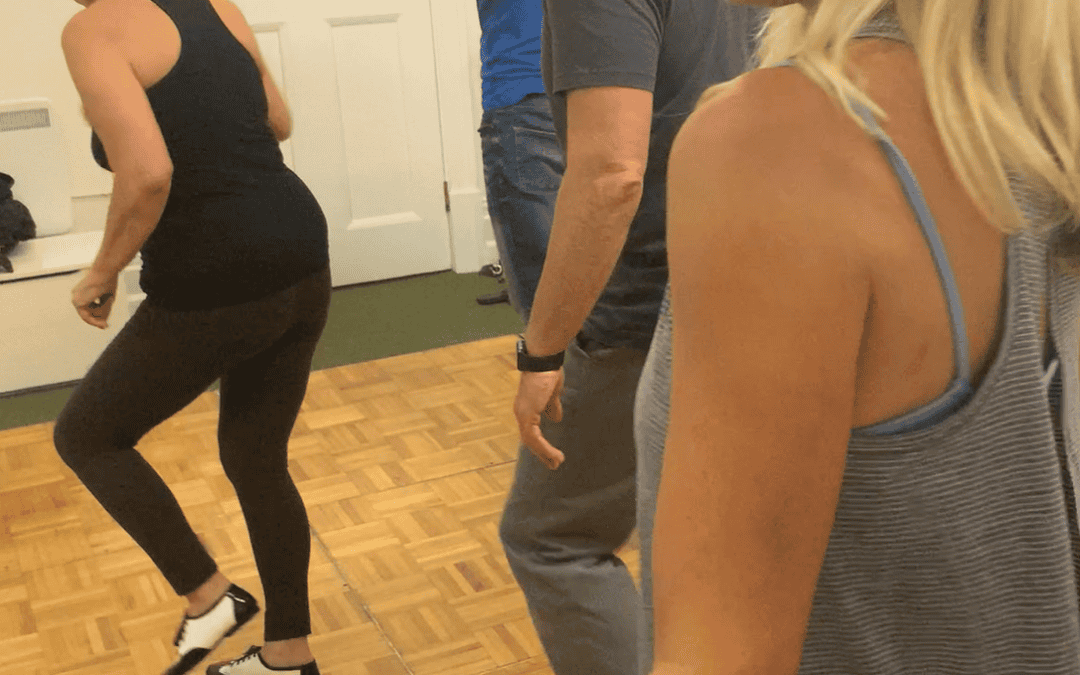If you’ve been to a mainstream Salsa club recently you’ll know warm ups are fairly predictable – both in content and the fact that only a small percentage of dancers bother to arrive early enough to participate.
Some folk are still trickling in in driibs and drabs, others are sitting on the sidelines changing their shoes. Some are having a good old chinwag with their friends.
The beginners are shuffling around at the back nervously, already getting stressed before the main class has even started, realising they are already out of their depth and only a few minutes in.
If you’re lucky you’ll get a bit of body isolation to start…
Shoulder rolls are usually a safe bet. Ribcage and hip isolations will often make the guys squirm as you can almost guarantee their bodies have never moved that way before, and aren’t that keen on doing it now.
Then you’ll get few basics, side basics and Suzy Qs.
Maybe a few crossover walks.
Then you get that fiddly bit of footwork that only the teacher can do.
You look around the room and see 6 of the 25 people in the room make a half decent stab at it with the rest fumbling and floundering or doing their own version of it.
Less than half the class get it but the teacher moves on anyway.
No problem – it’s only a warm up.
Doesn’t really matter.
Or does it?
I believe the warm up is much more than merely a physical preparation for movement.
In the context of Salsa it provides:
A buffer zone between the learning environment and the outside world
Many people come to Salsa class straight from work. They may have been stuck in traffic, getting irritable on a packed train, or still carrying anger or upset from a work related or personal conflict. A good warm up will provide time and space to offload the events of the day and refocus the attention.
A parasympathetic reset
A warm up should reduce stress – not increase it. Helping students to reset their nervous system will get them calm and centred. Deep breathing and slow, rhythmic movements are the order of the day. Simple stuff that even the most nervous, raw beginners can feel good about joining in with.
A neurological preparation
The warm up should prepare the brain for learning. It should also prime the nervous system for the balance, spatial and rotational challenges which are integral to Salsa as well as connecting to the rhythms in the music.
There are ingredients within every Salsa step or footwork pattern which make up the whole – postural alignment, foot pressure, foot positioning/placement and core activation. A warm up should revisit all these elements individually before combining them.
A physiological preparation
Joint mobility and taking muscles through decent ranges of motion is important for dancers – especially in Salsa where shoulder flexibility, foot and ankle strength, and ability to change direction at speed is essential. A good warm up will also help dancers feel more grounded by allowing them to feel the difference between weight shift and a full weight transfer, and learn how to use the floor to create direction change before moving onto more complex steps.
Rehearsing physical skills
Finally, after everything else has been covered, we are then ready to bring in some simple Salsa moves.
This is where your basic turns and simple shine footwork comes in. It’s also important to realise there is a difference between a warm up and a dedicated shine/styling/footwork class or class segment.
Music Choice Is Also Important For a Salsa Warm Up
Not too fast, not too complicated and just the right energy.
My method uses two music tracks.
The first is usually a slow Son Montuno or Guajira which takes care of the basic mobility and grounding work, ending with some simple weight shift and weight transfer and foot tapping exercises, building up the basic so students can connect to every part of their body and feel the floor.
The second track is a Salsa with a steady tempo which allows us to lock in our timing without feeling under pressure.
This is where I touch base with essential footwork, recap whatever we’ve been working on in previous lessons, and students above beginner level will get a few simple combos dropped in as well.
I never use RnB or Latin Pop crossover songs as I believe it’s important for dancers to get as much exposure to the unique rhythmic structures of Salsa music as possible – and to watch how my body responds and moves to them.
Why all this faff when people just want to get on and dance?
Well here’s the scienc-y bit:
You may not have heard of polyvagal theory but it describes the three main states of our nervous system:
VENTRAL VAGAL
This is the safe and social state. You feel connected, open to new possibilities, joyful, and calm. The creative learning centres of your brain are online. You feel engaged and present in the moment. This is where you can find your creative flow.
SYMPATHETIC
This is the fight or flight response. You will feel wired, agitated, angry, nervous, anxious.
The learning centres of the brain are down-regulated to enable all biological resources to be diverted to getting out of unsafe situations. Students in this state are likely to drop out of the class, get confrontational with the teacher or other students, or even walk out of the club or studio.
DORSAL VAGAL
This is the shutdown state often caused by extreme or prolonged trauma. It is a protective mechanism which dissociates you from your body’s responses and disconnects you from the outside world.
It is recognised by emotional numbness, an inability to tune in to your body’s natural responses.
Why Is This Knowledge Important?
Many people live in their sympathetic state for a large part of their day, reacting to situations at work, triggers on social media.
Some will have deep rooted trauma embedded in their nervous systems which make it extremely difficult for them to relax, switch off, or even to feel and connect with their own body’s responses.
In the context of beginners in Salsa, being confronted with a struggle or failure experience within the first few minutes of arriving at a Salsa club can easily be enough to trigger their fight or flight response.
It can be enough to convince them not to come back.
And even more experienced dancers may find they descend into confusion, overwhelm or panic when confronted with something which isn’t broken down sufficiently or they don’t have enough time or repetition to really get the hang of.
It’s not setting keen novices or enthusiastic new students up with the best chance of success. However these states can be easy to recognise in yourself and others once you know the signs. And it can be really easy to defuse them or even better, prevented from occurring at all.
One of the things I learned when I was training as a fitness instructor was that you have to strike a balance between what people enjoy, what they actually need, and what gives them the quick win so they come back next time, and the time after.
So you can see that helping dancers access their Ventral Vagal state should be a top priority when teaching a warm up and can lead to more successful outcomes in the main class.
This is where they are going to feel their best flow, find learning easier, and the experience of taking Salsa class most enjoyable.
It will also help them develop the sensitivity required to be a good dance partner – if you can’t tune into your own body, you are unlikely to be able to read your partner either.

